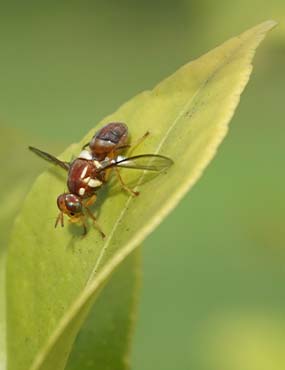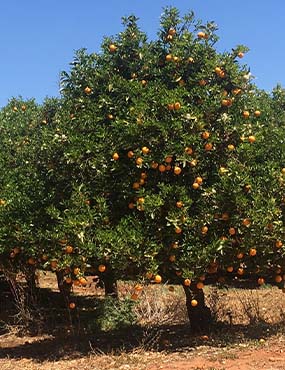
Post-Factory Pilot of SITPlus fly production
The Sterile Insect Technique (SIT) is a promising sustainable method for regional management of Queensland fruit fly (Qfly), the single most significant pest of fruits and vegetables in Australia. A significant research effort, the SITplus program, has greatly improved the production and quality of sterile insects for Qfly SIT. A sterile Qfly factory has been established and is now operating in Port Augusta (SA). This project utilizes the material and the methodologies that have been developed through SITplus for a post-production pilot programme that establishes operational procedures and demonstrates program efficacy to ensure that reliable and sustainable SIT is available when needed to protect production and market access.
Facilities have been established in Yanco (NSW) and Tatura (VIC) for rearing out and maturation of sterile adult flies from irradiated pupae that are delivered weekly from the SITplus fruit fly factory in Port Augusta (SA). At five days of adult age, the flies have been chilled and transferred to an aerial release system in a light aircraft and released over Hillston (NSW) and Cobram (VIC). By comparing the numbers of wild flies in the release towns with historical data from those towns and with comparable nearby towns, a strong effect of SIT in reducing Qfly pest populations has been demonstrated.

SIT releases have had considerable success in suppressing wild Qfly populations. For example, the rate of capture of wild male Qfly in traps is on average 8 to 10 times higher in Mooroopna, a control site where sterile flies were not released than in Cobram where sterile flies have been released. The programme has demonstrated the effectiveness of SIT as a tool for suppressing Qfly populations in endemic regions, particularly when deployed in a community-run area wide management (AWM) program. The deployment of SIT has been strongly supported by local growers and the community, who have welcomed the substantial reductions in pest pressure and the reduced need for pesticides to protect commercial and backyard crops.
Funding: Horticulture Innovation Australia Research & Development Grant (FF17001)
Partners: SA Research Development Institute, NSW Department of Primary Industries, Agriculture Victoria Research, NZ Institute for Plant & Food Research
Contact: Dr Bishwo Mainali and Prof Phil Taylor
Post -production pilot diagram
Sex selection genes from fruit fly species for use in Qfly Sterile Insect Technique